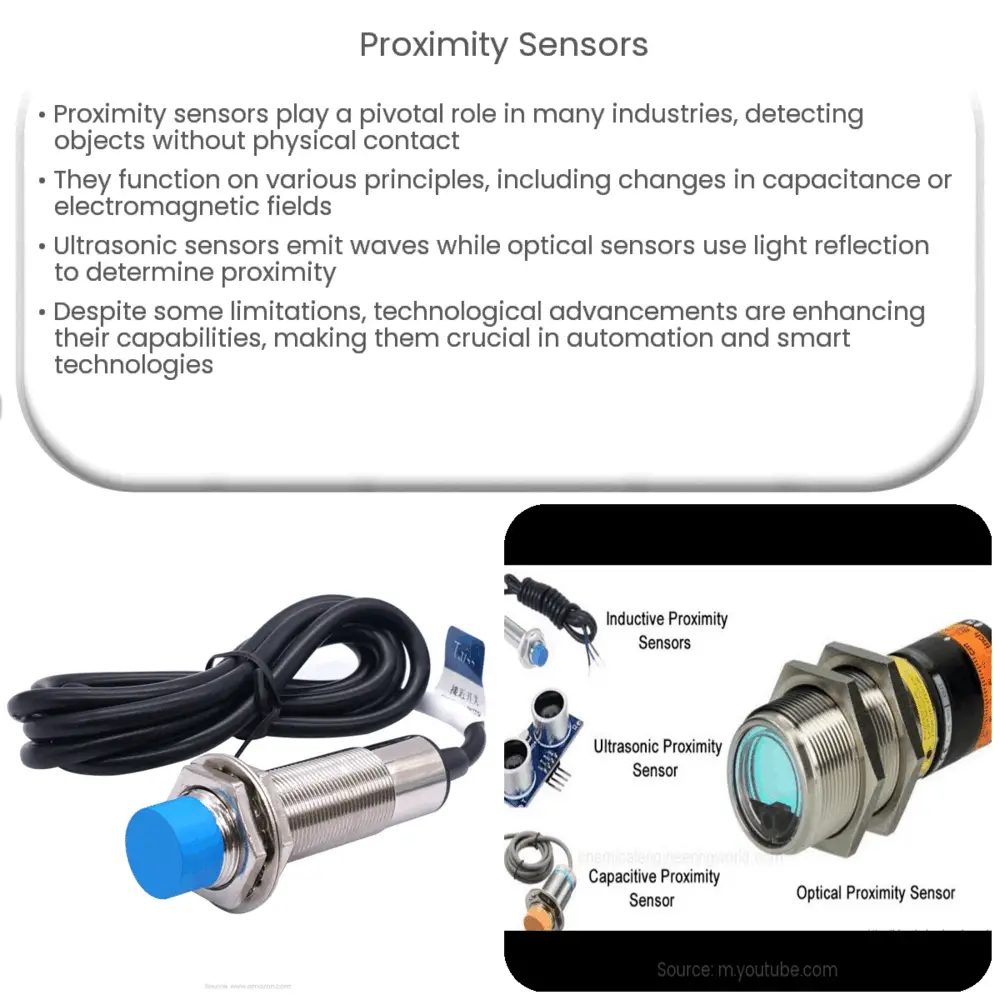Explore the world of proximity sensors, their working principles, various types, applications across industries, and their future potential.

Understanding Proximity Sensors
Proximity sensors are a crucial component of many industries today, playing a pivotal role in various applications, including robotics, automation, security systems, and more. These remarkable devices can detect the presence or absence of an object without any physical contact, hence their widespread use.
The Working Principle of Proximity Sensors
Proximity sensors operate based on different scientific principles to detect objects. The most common types include capacitive, inductive, ultrasonic, and optical proximity sensors.
- Capacitive Proximity Sensors: These sensors function by measuring changes in an electrical property known as capacitance. Capacitance describes how two conductive objects with a space between them respond to a voltage difference applied to them. When an object comes within the sensing area, it changes the capacitance value, thus signaling the sensor.
- Inductive Proximity Sensors: These are primarily used to detect metallic objects. They operate on the principle of inducing an electromagnetic field. When a metal object enters this field, it causes changes in the field’s properties, thereby triggering the sensor.
Meanwhile, the ultrasonic and optical proximity sensors work on slightly different principles.
Ultrasonic and Optical Proximity Sensors
- Ultrasonic Proximity Sensors: These sensors emit ultrasonic waves. When an object comes into the sensing area, it interrupts the wave pattern. The sensor detects this change, thereby identifying the object’s presence.
- Optical Proximity Sensors: These work by emitting light (usually infrared). When an object comes close enough, it reflects the light back to the sensor. The sensor then measures the intensity of the reflected light to determine the object’s proximity.
Each type of sensor has its unique advantages and is suitable for different applications, making them versatile tools in a wide array of industries.
Applications of Proximity Sensors
Proximity sensors have found extensive use in various sectors due to their ability to efficiently detect objects without physical contact. Here are a few applications:
- Automobile Industry: In the auto industry, proximity sensors play a crucial role in implementing advanced driver-assistance systems (ADAS). For example, parking assistance systems use ultrasonic proximity sensors to detect obstacles around the vehicle.
- Manufacturing and Automation: In automated assembly lines, inductive proximity sensors can detect metal parts, control machine sequences, and ensure safety.
These are just a few examples, and the list of applications goes on, showcasing the importance of proximity sensors in today’s technological landscape.
Further Applications of Proximity Sensors
- Mobile Devices: Proximity sensors in smartphones automatically turn off the display when you hold the device up to your ear during a call. This feature conserves battery and prevents accidental touch inputs.
- Security Systems: In security and surveillance applications, proximity sensors can detect any unauthorized access or movement. For instance, they are often used in burglar alarm systems.
- Healthcare: In the medical field, proximity sensors are used in various types of equipment, such as automatic hand sanitizer dispensers that help maintain hygiene levels in healthcare facilities.
Advantages and Limitations of Proximity Sensors
Proximity sensors provide numerous benefits, such as high reliability, long functional life, and the ability to detect a wide range of materials. Additionally, their non-contact nature allows for less wear and tear, making them more durable than contact sensors.
However, they also come with certain limitations. For example, their sensing range is relatively short. Furthermore, environmental factors like temperature, humidity, and dust can affect the sensor’s performance. Different sensor types also have varying sensitivity to different materials.
The Future of Proximity Sensors
With advancements in technology, we can expect the capabilities of proximity sensors to continue to expand. Innovations in sensor technology are likely to result in increased sensitivity, longer detection ranges, and improved ability to work in a variety of environmental conditions. Moreover, as the Internet of Things (IoT) continues to grow, the demand for proximity sensors is also expected to rise, given their critical role in many IoT applications.
Conclusion
In conclusion, proximity sensors are an integral part of our technological world, embedded in a variety of industries and applications. Their ability to detect objects without physical contact, combined with their versatility and reliability, make them an indispensable tool in numerous fields. While they do have some limitations, ongoing technological advancements promise to enhance their capabilities and expand their applications even further. As we move forward, the role of proximity sensors is bound to become even more critical in shaping the future of automation and smart technologies.

